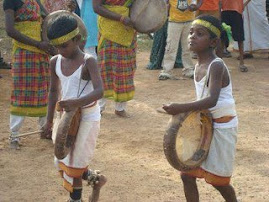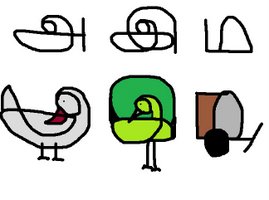THE MAYANS ARE THE TAMILS.
Who Brought The Mayans To Mexico ? or Were the Ancient Turks, Akkads (Sumerians) and Dravidians (Tamils) the parents of Mexico and Meso-America ?
By Gene D. Matlock
THE FOREFATHERS OF THE MAYANS SET SAIL FOR MESO-AMERICA.
The time is about 1,500 BC. A fleet of Tamil ships in some harbor of the Konkan or Kankon, a beautiful white sand coastline stretching from today’s Maharasthra to the southern tip of Western India, raises anchor and sails south to what is now the large island nation of Ceylon/ Eelam (today’s Sri Lanka). Their goal is to sail to Patala or what is now Mexico and Meso-America, leaving emigrant settlers there. During their stay in Ceylon, they recruited skilled stone workers, skilled craftsmen, and temple builders in the
province of Maya, to build a new Tamil civilization over or alongside an Akkad-type (Sumerian) civilization that was already in Meso-America : that of the Olmecs or Olman.
The ancient Tamils were international traders and colonizers. Wherever they went in the world, they left an unmistakable imprint of their presence, such as place names, foods, games, and temple buildings. Their temple buildings were usually Zikharis (tiered or pyramidical temple platforms). Often, small entrances or temples were located on each tier, but not always. On the top tier, there was always a temple. On top of it often stood an ornate rectangular steeple. However, circular domes or single spires often stood on top of the temple as well. Zikharis usually varied in appearance, according to the Dravidian or Tamil-derived cultures of the host nations. But one thing never changed: the unmistakable presence of Tamil influence.
THE MAYANS WERE TAMILS :
I am now ready to return to the hypothetical voyage of Tamils to America. They probably used two types of maps. One map shows Mt. Meru with petals pointing in four directions. The left petal points toward a distant land called Ketumal or Chetumal. In order to reach that land, they had to go eastward in order to avoid sailing around the tip of Africa. They knew where they were going, for they had been there before! The second map was their own map of the world.The Mayans said that the land of their forefathers lay 150 days westward.
When the Tamils arrived in North America, they crossed over to what is now the Caribbean Sea, through the Isthmus of Panama (The Great Crossing). After coming out the other side, they docked in the safe harbor of Chetumal. It still bears the same name. Chetumal harbor is in Belize. Belize derives from Belisha (God Shiva).
Later, they left Chetumal, sailing up the coast to a place reminding them of the beauty of their old home in Konkan. They dropped anchor and made their first home in America there. Not surprisingly, they decided to name their new home Kankun (Cancun). After thousands of years, the last syllable has barely changed in pronunciation.
When the Tamils settled in Yucatan, they built their typical Zikharis, such as those of Tikal and Palenque. At Tikal, they stained their stone monuments a reddish color, just as they had done back in the Konkan.
People are surprised to see stone images of elephants in Mayan country, such as the following one in Copan. It may be a reminder of the elephants in India.Some authorities, who do not agree with me that the Mayans came from abroad, think Southern Mexico once had elephants. The truth is that they worshiped a long-nosed god (Chac) or elephant, just as the Hindu Tamils worshiped the elephant-headed Ganesha in India.
Chak was the long-nosed Mayan God of thunder, lightning, rain, and crops. His elephantine trunk sprayed water on the earth. His equivalent in other parts of the world was Zeus, Dyaus, Jupiter, Ca, Jah, Ju, Jahve, Jehova Jeho, Sakh, Sagg, Sa-ga-ga, Sakko, Zagg, Zax. a.k.a. Zeus, is often depicted holding a serpentine thunderbolt and a grail, or someone is handing it to him. The Mayan Chak is equally depicted.
The Tamils and all the tribes of Meso-America, from Mexico to Panama, played the same board game: Pachesi. The Meso-Americans called it by a linguistically similar name: Patolli. (Note: CH and T are linguistically similar. LL was the only way the Renaissance Spaniards could approximate the sounds of Z and J. This proves that Patolli derived from Pachesi.) I myself saw a Patolli board game at the National Museum of Costa Rica, in
San Jose. I myself saw a Patolli board game at the National Museum of Costa Rica, in San Jose.
BOTH THE MEXICAN INDIANS & TAMILS ATE TAMALES WITH THE SAME NAME!
The Tamils and Turks even gave some of their favorite dishes to the ancient Mexicans, and with the same names! I will name just two of them: Tamales and Corundas. The ancient Tamils were known as Tamils or Tamals. One of their favorite foods was a type of paste or filling wrapped in bamboo husk. Even in Tamil Nadu it is called Tamal. The Michoacanos have a similar triangular shaped tamal called Corunda. In Turkic it would be kur-unda (Turkic dough).
My Tamil Nadu friend, Mr. Subash Bose, pointed out to me the fact that Hindus often worship cobras and that the Mayans worshipped rattlesnakes. He said that Mayan huts look exactly like those in Tamil Nadu.
In this article, I have just presented a tiny part of the evidence in my possession, pointing to the Indian and Ceylonese origins of the Mayans. I have decided to end this article by recounting what the Jesuit priest Francisco Xavier Clavigero wrote in Volume I of his Historia Antigua de Messico (Ancient History of Mexico). Clavigero said that the Chiapaneco Mayans told him that a grandson of Noah, Votan, took people to people America. He was from the Chan (Naga or Serpent) tribe. They said that he came from the East, bringing seven groups with him. Two other leaders (Groups?) had also previously brought in settlers: Igh and Imox. He built a great city, now known as Palenque, call Nauchan, meaning City of the Serpents. When Noah emerged from the Ark, he and his people built their first city, calling it Nashan (The Noachide Chan).
Votan founded three tributary monarchies called Tulan, Mayapan, and Chiquimala. The ruins of Tulan are those of Tula, Hidalgo, Mexico. Mayapan is the Yucatan peninsula itself. I have not yet located the region of Chiquimala. Perhaps it is Guatemala or the Mayan province of Tzequil.
Like many Europoids ignorant of India and its history, Clavigero tried to place them in Cartagena, Africa, Rome, and even Spain. But he at least intuited that the early Mayan settlers were Phoenicians.
Had he been more knowledgeable about ancient India and Ceylon, he would have known that they were Ceylonese, for in Tamil, VALAM POTAM means Place of Boats.Valam Potam (Ceylon) was located between the Tropics of Cancer and Capricorn, where the trade winds are. The differences between Valum Votan and Valam Potam are trivial. Notice the map showing the sea and land routes of the ancient Tamils. You’ll notice the words Oceanus Indicus (Indian Ocean). The ancient maps which the Spaniards used to get to America showed the same terms: Mar Indica / Oceanus Indica. From where did they obtain those maps showing that the eastern end of Oceanus Indica was America?
The stone heads staring at the sea, from the shores of Easter Island, tell us a lot about the ancient sailors they’re supposed to represent. Notice their headpieces. Could they be Tamil turbans?
Many people don’t know that the Mayans and Toltecs weren’t the only immigrants who entered the Americas through Chetumal, the Plymouth Rock of many American Indians. I can name several United States Indian tribes who also landed there. Their origin stories say so in plain words.In view of what I have said in this article, who is better qualified to identify the origins of our American Indians? Our Europoid academics? Or the Turks, Hindus, and American Indians?
All kinds of speculations have been made, many mystical, about the ancient sea-farers known as Wotan, Woden, the German Wuotan, the Yap Island Paathan, and the Philipine Bataan. Even today, a large tribe of Pakistanis are called Pathan. Votan was never a single person. He was really a nation of sailors. This ancient nation of sailors and adventurers is still with us : The Dravidian Tamils !






















கருத்துகள் இல்லை:
கருத்துரையிடுக